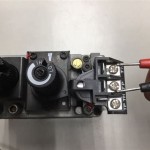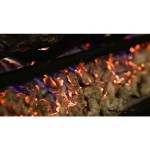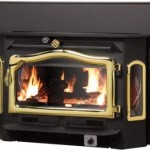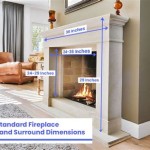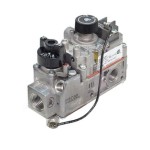Understanding Cast Iron Fireplace Grates: A Comprehensive Guide
Cast iron fireplace grates are essential components of traditional fireplaces, serving as a platform to support firewood and facilitate efficient combustion. Their robust construction, heat resistance, and ability to radiate heat make them a popular choice for homeowners seeking both functionality and aesthetic appeal. This article provides a detailed examination of cast iron fireplace grates, covering their functions, advantages, disadvantages, selection criteria, maintenance, and impact on fireplace efficiency and safety.
Key Functions of a Cast Iron Fireplace Grate
The primary function of a cast iron fireplace grate is to elevate firewood above the fireplace floor. This elevation creates crucial airflow beneath the wood, promoting complete and even burning. Without a grate, the bottom layer of wood would be starved of oxygen, leading to smoldering and incomplete combustion, resulting in increased smoke production and reduced heat output.
By providing a structured platform, the grate also prevents firewood from rolling or shifting, contributing to a safer and more controlled burning environment. This stability allows for a more consistent flame and reduces the risk of sparks or embers escaping the fireplace.
Furthermore, the grate facilitates the removal of ash. As firewood burns, ash accumulates below the grate, keeping it separate from the burning embers. This separation prevents the ash from smothering the fire and impeding airflow. Regular ash removal is essential for maintaining optimal combustion efficiency.
Advantages of Using Cast Iron Fireplace Grates
Cast iron offers several advantages as a material for fireplace grates. Its inherent strength and durability allow it to withstand the intense heat and repeated stress associated with burning firewood. Unlike grates made from thinner or weaker materials, cast iron grates are less prone to warping, cracking, or premature failure.
Cast iron possesses excellent heat retention properties. Once heated, it radiates heat into the surrounding room, contributing to a more consistent and comfortable warmth. This radiant heat can significantly improve the overall heating efficiency of the fireplace.
The weight of cast iron adds to the grate's stability and prevents it from shifting or tipping under the weight of heavy firewood. This stability is particularly important in larger fireplaces where substantial amounts of wood are burned.
From an aesthetic perspective, cast iron grates often feature intricate designs and ornate patterns that enhance the visual appeal of the fireplace. Their timeless look complements a wide range of architectural styles and adds a touch of traditional charm to the hearth.
Disadvantages and Considerations
While cast iron offers numerous benefits, certain disadvantages merit consideration. Cast iron is a relatively heavy material, which can make installation and removal of the grate challenging, particularly for individuals with limited strength or mobility.
Cast iron is susceptible to rust if exposed to moisture. It is essential to keep the grate dry and protected from the elements when not in use. Regular cleaning and maintenance can help prevent rust formation and extend the grate's lifespan.
Compared to grates made from lighter materials like steel, cast iron grates can be more expensive. This higher cost reflects the material's properties and the more intricate manufacturing processes involved in producing cast iron components.
Prolonged exposure to extremely high temperatures can eventually lead to fatigue and cracking in cast iron. While cast iron is generally durable, it is not indestructible. Overloading the grate with excessive amounts of firewood can accelerate wear and tear.
Selecting the Right Cast Iron Fireplace Grate
Choosing the appropriate cast iron fireplace grate requires careful consideration of several factors. The size of the fireplace opening is a primary determinant. The grate should be sized to fit comfortably within the firebox, allowing for adequate clearance around the sides and back. A grate that is too large can impede airflow and make it difficult to load firewood.
The design and construction of the grate also warrant attention. Look for a grate with sturdy legs and a well-supported framework. The spacing between the bars should be appropriate for the type of wood being burned. Wider spacing is suitable for larger pieces of wood, while narrower spacing is preferable for smaller pieces or kindling.
The quality of the cast iron is another important consideration. A higher-quality casting will be more resistant to cracking and warping. Examine the grate for any signs of imperfections or weaknesses. A grate with a smooth, even surface is generally indicative of a well-made product.
The intended use of the fireplace should also influence the choice of grate. If the fireplace is used frequently for extended periods, a heavier-duty grate is recommended. For occasional use, a lighter-weight grate may suffice.
Maintenance and Care of Cast Iron Fireplace Grates
Proper maintenance can significantly extend the lifespan of a cast iron fireplace grate. Regular cleaning is essential to remove ash and debris. Use a fireplace shovel or brush to sweep the ash from beneath the grate and to clear any accumulated debris from the grate's surface.
After cleaning, inspect the grate for any signs of rust or damage. If rust is present, use a wire brush to remove it and apply a high-temperature paint or coating to protect the surface. This coating will help prevent further rust formation.
Avoid overloading the grate with excessive amounts of firewood. Overloading can stress the grate and accelerate wear and tear. Distribute the wood evenly across the grate to minimize localized stress.
When the fireplace is not in use, store the grate in a dry location to prevent rust. If the grate is stored outdoors, cover it with a waterproof tarp to protect it from the elements.
Impact on Fireplace Efficiency and Safety
A well-maintained cast iron fireplace grate can significantly improve the efficiency and safety of a fireplace. By promoting complete combustion, the grate reduces smoke production and increases heat output. This results in a more efficient use of firewood and a more comfortable heating experience.
The grate's elevated platform helps prevent the buildup of creosote in the chimney. Creosote is a flammable substance that can pose a serious fire hazard. By reducing creosote accumulation, the grate contributes to a safer fireplace environment.
The stability provided by the grate helps prevent firewood from rolling or shifting, reducing the risk of sparks or embers escaping the fireplace. This stability is particularly important in fireplaces that are used frequently or that are located in areas with high foot traffic.
The ability to easily remove ash from beneath the grate helps maintain optimal airflow and prevents the ash from smothering the fire. This ensures a more consistent and controlled burning process, further enhancing safety and efficiency.
Alternatives to Cast Iron Fireplace Grates
While cast iron is a popular choice for fireplace grates, alternative materials and designs exist. Steel grates are a common alternative, offering a lighter weight and lower cost compared to cast iron. However, steel grates may not be as durable or heat-retentive as cast iron grates.
Wrought iron grates offer a similar aesthetic to cast iron grates but may be more resistant to rust. Wrought iron is often used in decorative fireplace accessories and can provide a stylish alternative to cast iron.
Grate heaters are a more advanced type of fireplace grate that incorporate tubes or fins to increase heat transfer. These heaters can significantly improve the heating efficiency of a fireplace but may be more expensive than traditional grates.
Some fireplaces use a series of bars or supports built into the firebox instead of a separate grate. These built-in supports provide a similar function to a grate but may not be as easily removable or replaceable.
The selection of a fireplace grate, regardless of material, should be based on the individual's needs and priorities. Factors such as budget, heating requirements, and aesthetic preferences should all be considered.

Liberty Foundry 20 In Cast Iron Heavy Duty Fireplace Grate With 4 Clearance G800 Bx The Home Depot

17 Wide Small Cast Iron Fireplace Wood Fire Grate

24 Inch Fireplace Grate Cast Iron Log Rack Heavy Duty Steel Holder 3 4 Bar Fire Grates Wrought Wood Stove Firewood Burning For Indoor Outdoor Chimney Com

Pleasant Hearth 24 In Cast Iron Grate Cg24 The Home Depot
Eclectic Red Barn Antique Fireplace Grate Decorated For

Panacea Graphite Black Cast Iron Fireplace Grate Target

Minuteman International 1 25x0 75 Cast Iron 24 In 7 Fireplace Grate The Grates Department At Com

Best Cast Iron Fireplace Grates Hy C

Firebacks 500 Charles Nijman Fireplace Antiques

27 Inch Cast Iron Heavy Duty Fireplace Grate

